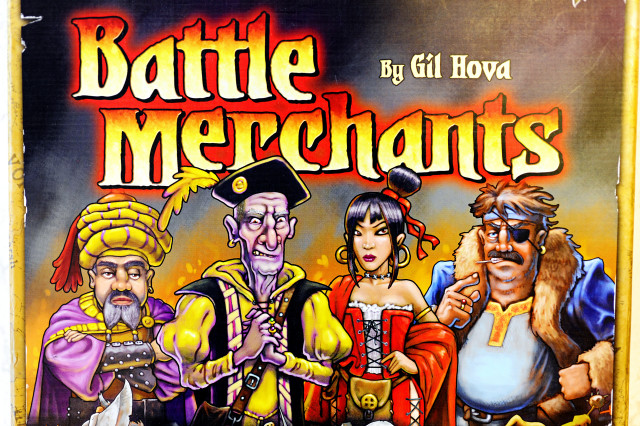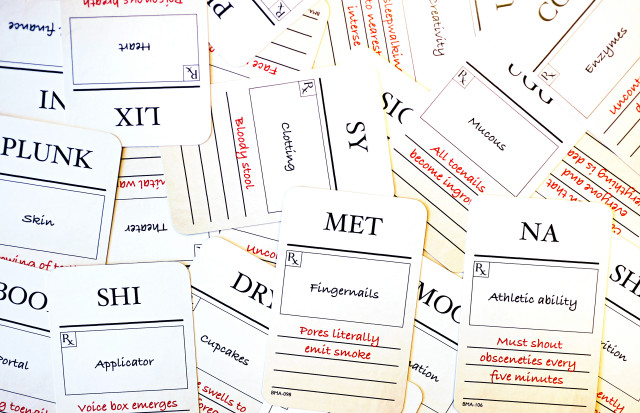Not everyone has the mind, patience and dedication to design a game. People have often asked me if I want to be a designer or if I have a bunch of different ideas for games. And of course I do, but that’s all they are; loose ideas floating around in my head. I don’t have the discipline to sit down and get them on paper and go through the play testing and distillation process necessary to create a board game. I really admire that quality that most designers have. Truth is, I don’t think just because you’re a fan of a hobby, that it means you should necessarily try to be a creator. Not every movie fan should direct, not every book lover should write.
Gil Hova has that dedication. He has considered himself a designer for many years now. In 2015 he founded Formal Ferret Games to begin publishing his own work. He blogs under the same name, but you might know it by its former title, Fail Better. He got the name from a Samuel Beckett play and it pretty much sums up the idiosyncratic process of game design.
His first published game, Prolix, was released in 2010 by Z-Man games. “I had played a lot of strategy games up until that point, but I had this cool idea for a word game and I felt like there was a direction to go that people hadn’t previously taken.” Prolix allows players to spell words, even with letters that are not on the board. You’re free to come up with whatever words you can, but you’ll only score points for the letters that are actually there.
Hova didn’t take a direct path to tabletop game design. As a kid he was an avid video game player. “I wanted to be a video game designer growing up,” he said. “In my early 20s I thought, ‘well if I’m going to do this thing I should start with board games before I go to video games.” It was that decision that led him down the path he’s on today.
“I took a detour and that detour took over because I realized I liked board games more than I liked video games.”
In 2014 his second release, Battle Merchants, was published by Minion Games. In Battle Merchants four different races (Elves, Dwarves, Orcs and Hobgoblins) are at war, but you don’t really care who wins. You just want to sell weapons to them all. The player with the most money at the end wins!
“It’s got good meat for a 90 minute economic game.” Hova’s goal was to make a game on the military industrial complex that wasn’t preachy. “I wanted to make a game that was gleefully amoral.”
 As anyone who’s tried to design a game before knows, some elements will work and some won’t. You might have a game on your hands that as a whole just doesn’t work, but there might still be some value in the individual parts. A mechanic or theme may stick with you until it finds a way into a design that works. Battle Merchants was based around an auction mechanic from earlier incomplete game of Hova’s. Eventually he took the auction out of Battle Merchants, but the idea stayed with him. Jump ahead to one of his most recent prototypes, Networks. This is a game that started out with no theme, just the auction. As it was developed it took on the scenario of TV execs fighting over shows…and just like Battle Merchants, play testing determined that the auction wasn’t quite a fit there either. Hova hasn’t given up the auction mechanic, but he’s not about to try and force it into a game when it doesn’t fit. “Once you start settling into your theme, the theme starts informing you and giving you all sorts of direction.”
As anyone who’s tried to design a game before knows, some elements will work and some won’t. You might have a game on your hands that as a whole just doesn’t work, but there might still be some value in the individual parts. A mechanic or theme may stick with you until it finds a way into a design that works. Battle Merchants was based around an auction mechanic from earlier incomplete game of Hova’s. Eventually he took the auction out of Battle Merchants, but the idea stayed with him. Jump ahead to one of his most recent prototypes, Networks. This is a game that started out with no theme, just the auction. As it was developed it took on the scenario of TV execs fighting over shows…and just like Battle Merchants, play testing determined that the auction wasn’t quite a fit there either. Hova hasn’t given up the auction mechanic, but he’s not about to try and force it into a game when it doesn’t fit. “Once you start settling into your theme, the theme starts informing you and giving you all sorts of direction.”
For Hova, either the theme or the mechanic can be the first genesis of a game. One will lead to the other eventually and when they line up, he says, then you have the workings of a game. “In terms of theme and mechanism it’s not as important where you start as where you end. I think the important thing is that your theme and mechanism intersect in a way that flatters the game.”
Hova tries to keep a pretty broad audience in mind when he designs games. “I have to think about everyone,” says Hova. “I started to design games without knowing what games I actually enjoyed myself.”
His first designs included a number of bluffing games…until he realized he hated bluffing games. He’s come to follow the idea of a core engagement, a concept that asks you what is the key thing you want your players to embrace? “You have to decide what is your core engagement? And your mechanisms have to serve it and your theme has to serve it.”
2015 will be a big year for Hova and Formal Ferret. His hilarious Snake Oil style party game Bad Medicine was funded in March on Kickstarter with over 1000 backers. In Bad Medicine players work in teams to formulate and pitch cures to any condition you can possibly imagine. Bad Medicine should be shipping out by September. He’ll also be at GenCon with his own booth where you can check out some of his games.
party game Bad Medicine was funded in March on Kickstarter with over 1000 backers. In Bad Medicine players work in teams to formulate and pitch cures to any condition you can possibly imagine. Bad Medicine should be shipping out by September. He’ll also be at GenCon with his own booth where you can check out some of his games.
Designing has almost come full circle for Hova. One of his other big projects this year will be porting Prolix into a mobile digital format. “I may wind up as a video game designer after all,” he said.
You can check out Hova’s games and blog at gil.hova.net
Comments
No comments yet! Be the first!